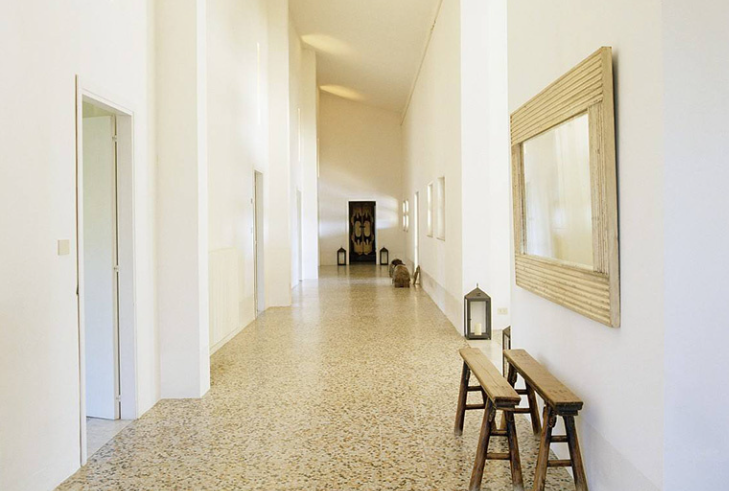Concrete Grinding VS Concrete Polishing
It is important to know the difference between concrete grinding and concrete polishing, because although you might think you want concrete grinding, it might be better to use concrete polishing to achieve your purpose.
Concrete Grinding
Concrete grinding is for removing unwanted coatings or concrete features. Grinding is nearly always a step you do before another process. For example removing old adhesives in order to get down to the surface before installing tile, paint, epoxy or other floor covering or concrete polishing. The purpose of grinding is to get the concrete surface back to it's original condition after pouring and troweling.
The grinding process uses relatively coarse metal bond concrete grinding tools for grinding, then seals the concrete with a chemical to make it impervious to liquids. It takes less time than a full polish because there are fewer steps. It still gives a smooth finish, but without the high gloss of fully-polished concrete.
Concrete grinding is for removing unwanted coatings or concrete features. Grinding is nearly always a step you do before another process. For example removing old adhesives in order to get down to the surface before installing tile, paint, epoxy or other floor covering or concrete polishing. The purpose of grinding is to get the concrete surface back to it's original condition after pouring and troweling.
The grinding process uses relatively coarse metal bond concrete grinding tools for grinding, then seals the concrete with a chemical to make it impervious to liquids. It takes less time than a full polish because there are fewer steps. It still gives a smooth finish, but without the high gloss of fully-polished concrete.
Concrete Polishing
Concrete polishing is a longer process designed to create a highly reflective surface. This means using concrete diamond polishing pads with a finer grit range to polish the concrete, combined with applying a densifier and finally a sealant to make concrete shine. The densifier closes the pores in the concrete, which gives it a mirror finish. And polishing is often up with staining in order to achieve patterns, artwork, company logos etc.
It is important to harden the surface of the concrete to help the concrete maintain the high level of shine that polishing will produce. Therefore, densifying and sealing the concrete is also essential during the polishing process. Make sure the surface is cleaned thoroughly then simply apply the densifier and let it dry. After reaching your desired shine, apply a high gloss sealer for maximum shine or the heavy duty sealer for a durable finish then finish off with burnishing pads.
Concrete polishing is a longer process designed to create a highly reflective surface. This means using concrete diamond polishing pads with a finer grit range to polish the concrete, combined with applying a densifier and finally a sealant to make concrete shine. The densifier closes the pores in the concrete, which gives it a mirror finish. And polishing is often up with staining in order to achieve patterns, artwork, company logos etc.
It is important to harden the surface of the concrete to help the concrete maintain the high level of shine that polishing will produce. Therefore, densifying and sealing the concrete is also essential during the polishing process. Make sure the surface is cleaned thoroughly then simply apply the densifier and let it dry. After reaching your desired shine, apply a high gloss sealer for maximum shine or the heavy duty sealer for a durable finish then finish off with burnishing pads.
Both concrete grinding and concrete polishing are important in concrete construction. Sometimes, both of them need to be carried out at the same time to achieve the effect you want instead of just choosing one of the options. Regarding which method is suitable for your concrete floor and what concrete diamond tooling should be selected for, TransGrind can give you professional advice to support your job.

Z0OB_%E5%89%AF%E6%9C%AC.jpg)


Comments
Post a Comment